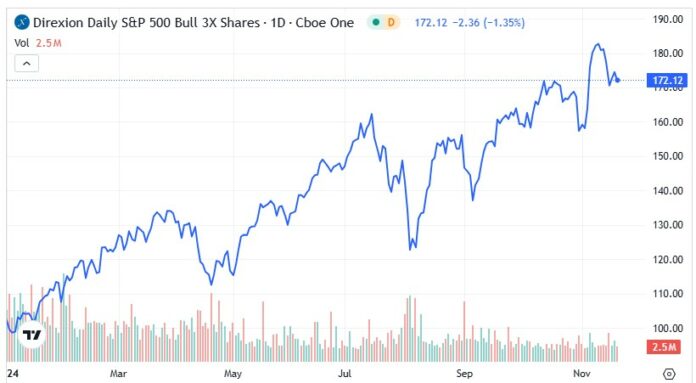Walmart’s Strong Earnings Contrast with Target’s Struggles: A Mixed Bag for Investors
Wednesday morning began with optimism for some investors, especially after Walmart Inc WMT posted impressive third-quarter results. The retail giant reported adjusted earnings per share of 58 cents, surpassing analysts’ expectations of 53 cents. Revenue also hit $169.59 billion, marking a 5.5% increase compared to last year and a 6.2% rise when adjusted for constant currency. This exceeded the predicted revenue of $167.72 billion.
Walmart’s performance in eCommerce was particularly noteworthy, with global sales increasing by 27%. This growth was attributed to store-fulfilled pickup and delivery, along with an expanding marketplace. Additionally, Walmart’s advertising revenue grew by 28%, while Walmart Connect in the U.S. experienced a 26% increase. The chain has successfully captured the attention of households with six-figure incomes looking for quality shopping options.
CEO Doug McMillon noted, “People come to us to shop as a primary destination in many instances and then they give us feedback across categories. And if you look at our offer in food and consumables, our shares are pretty high and consistent relative to some of the things we see in general merchandise.”
Target’s Earnings Misses Mark and Challenges Ahead
However, not all retail news was positive. Target Corporation TGT, a Walmart competitor, delivered disappointing results that provided a stark contrast to Walmart’s success. During premarket trading, Target’s stock dropped sharply following its earnings announcement.
Target reported an adjusted EPS of $1.85, significantly below the consensus estimate of $2.30. While total revenue reached $25.67 billion, reflecting a modest 1.1% increase from the prior year, it still fell short of expectations, which were set at $25.90 billion.
The situation worsened as Target revised its outlook for the current fiscal year. Management now anticipates adjusted EPS to be between $8.30 and $8.90, a decrease from the prior guidance of $9 to $9.70, and falling short of the consensus estimate of $9.55.
Investment Strategies for the Current Market Landscape
Despite contrasting performance between Walmart and Target, this dynamic opens opportunities for investors considering Direxion’s leveraged exchange-traded funds. For those who remain optimistic about the market, the Direxion Daily S&P 500 Bull 3X Shares SPXL may be an attractive option. Conversely, those anticipating a market downturn might explore Direxion Daily S&P 500 Bear 3X Shares SPXS.
According to Direxion’s description, both SPXL and SPXS aim to achieve daily investment results of 300% (or inverse 300% for SPXS) of the S&P 500 index’s performance. Investors should be aware, however, that these leveraged funds are designed for daily trading; holding them for longer periods may result in erosion of value due to compounding.
Review of the SPXL and SPXS ETFs Performance
The SPXL fund has demonstrated strong performance, rising nearly 69% since the start of January. Nevertheless, signs of potential challenges are emerging.
- Currently, SPXL is above its 50-day and 200-day moving averages but has recently hovered around its 20-day exponential moving average, suggesting some near-term uncertainties.
- Despite its impressive year-to-date performance, SPXL’s growth has slowed in recent months, with a gain of just over 26% in half a year, and under 1% increase in the past month.
On the flip side, SPXS has faced difficulties amid the ongoing bull market of the S&P 500, posting a nearly 47% decline since the year’s beginning. Yet, there’s speculation that a recovery might be imminent.
- Currently below its 20 EMA, 50 DMA, and 200 DMA, SPXS has shown recent momentum that could suggest a turnaround.
- Since mid-October, there’s been a noticeable increase in buying volume, hinting at growing confidence in a bearish outlook.
Featured photo by Albrecht Fietz from Pixabay.
This post contains sponsored content. This content is for informational purposes only and is not intended to be investing advice.
Market News and Data brought to you by Benzinga APIs

